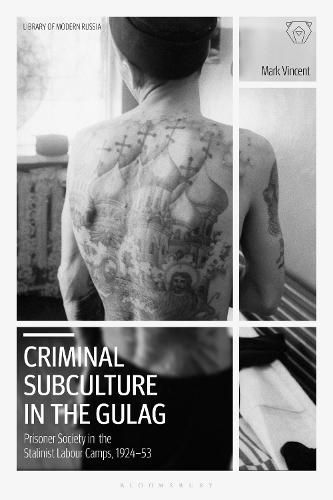Readings Newsletter
Become a Readings Member to make your shopping experience even easier.
Sign in or sign up for free!
You’re not far away from qualifying for FREE standard shipping within Australia
You’ve qualified for FREE standard shipping within Australia
The cart is loading…






Despite growing academic interest in the Gulag, our knowledge of the camps as a lived experience remains relatively incomplete. Criminal Subculture in the Gulag, in its sophisticated analysis of crime, punishment and everyday life in Soviet labour camps, rectifies this.
From Gulag journals and song collections to tattoo drawings and dictionaries of slang, Mark Vincent draws on often-overlooked archival material from the Moscow Criminological Bureau to reconstruct a fuller picture of Gulag daily life and society. In thematic chapters, Vincent maps the Gulag ‘penal arc’ of prisoners across initiation tests, means of communication, the importance of card playing, punishment rituals and the notorious 1948-52 cyka (‘bitches’) internal prison war between military veterans and vory-v-zakone. Most importantly, this timely examination of crime and punishment in modern Russia also highlights the lines of continuity between the Gulag systems, late Imperial Katorga,and today’s Russian mafia.
As such, this impressively interdisciplinary volume is important reading for all scholars of 20th-century Russia as well as those interested in international criminality and penology.
$9.00 standard shipping within Australia
FREE standard shipping within Australia for orders over $100.00
Express & International shipping calculated at checkout
Despite growing academic interest in the Gulag, our knowledge of the camps as a lived experience remains relatively incomplete. Criminal Subculture in the Gulag, in its sophisticated analysis of crime, punishment and everyday life in Soviet labour camps, rectifies this.
From Gulag journals and song collections to tattoo drawings and dictionaries of slang, Mark Vincent draws on often-overlooked archival material from the Moscow Criminological Bureau to reconstruct a fuller picture of Gulag daily life and society. In thematic chapters, Vincent maps the Gulag ‘penal arc’ of prisoners across initiation tests, means of communication, the importance of card playing, punishment rituals and the notorious 1948-52 cyka (‘bitches’) internal prison war between military veterans and vory-v-zakone. Most importantly, this timely examination of crime and punishment in modern Russia also highlights the lines of continuity between the Gulag systems, late Imperial Katorga,and today’s Russian mafia.
As such, this impressively interdisciplinary volume is important reading for all scholars of 20th-century Russia as well as those interested in international criminality and penology.